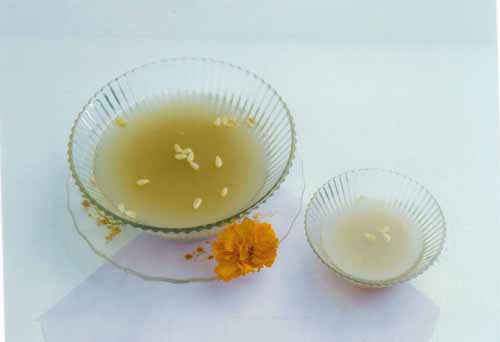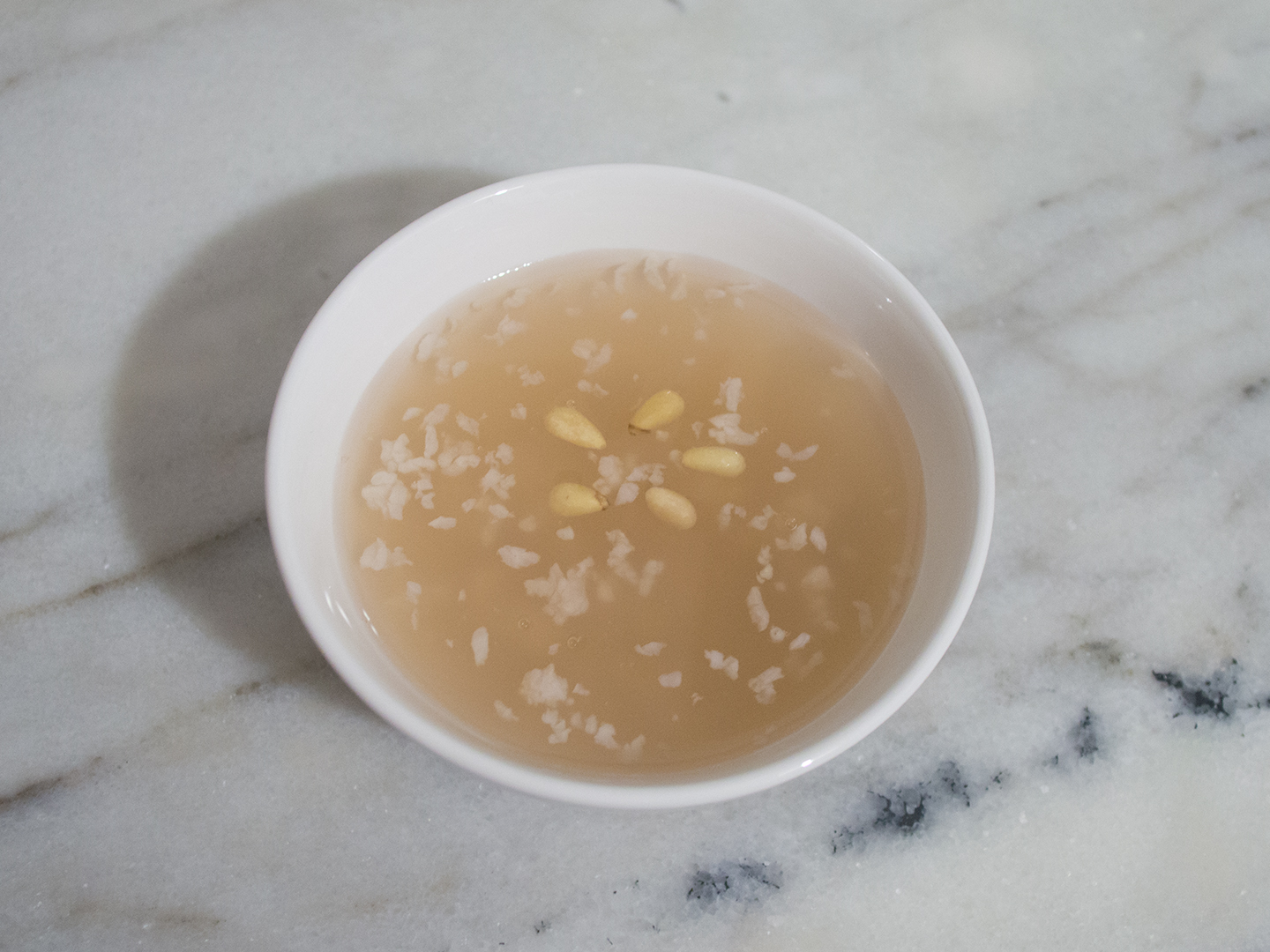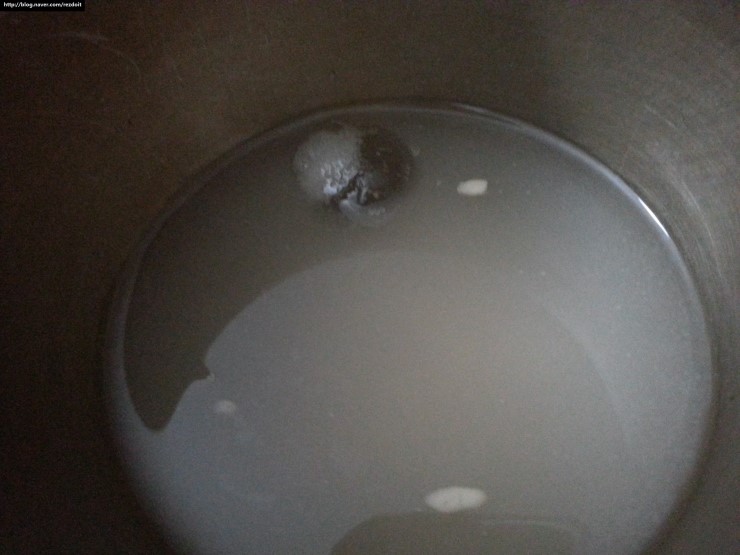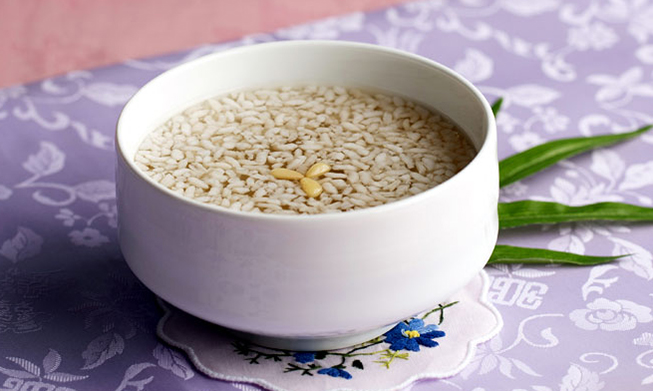You are looking for information, articles, knowledge about the topic nail salons open on sunday near me 식혜 영어 로 on Google, you do not find the information you need! Here are the best content compiled and compiled by the https://toplist.charoenmotorcycles.com team, along with other related topics such as: 식혜 영어 로 Sikhye, Rice punch, 수정과 영어로, 약과 영어로, 식혜 만들기, 잡채 영어로, 한과 영어로, Korea beverage
식혜(←식해, 食醯)는 한국의 전통 음료 중 하나로, 엿기름[1]과 쌀밥을 같이 삭혀 만드는 곡물음료이다. 영어로는 ‘sikhye‘, 혹은 ‘rice punch(쌀 펀치)[2]’로 번역되기도 한다.
ìí(sikhye) íìë©ë´ ìììê° ìì´ ì¼ë³¸ì´ ì¤êµì´ ë²ìì¬ì – ë¨íì¿¡
- Article author: www.lampcook.com
- Reviews from users: 20192
Ratings
- Top rated: 4.8
- Lowest rated: 1
- Summary of article content: Articles about ìí(sikhye) íìë©ë´ ìììê° ìì´ ì¼ë³¸ì´ ì¤êµì´ ë²ìì¬ì – ë¨íì¿¡ 식혜 한식메뉴 음식소개 밥을 엿기름물로 삭힌 다음 설탕을 넣고 끓여 달콤하게 만든 음료로 차갑게 즐긴다. 밥알을 띄워서 마시면 식혜, 밥알을 걸러내고 마시면 감주 … …
- Most searched keywords: Whether you are looking for ìí(sikhye) íìë©ë´ ìììê° ìì´ ì¼ë³¸ì´ ì¤êµì´ ë²ìì¬ì – ë¨íì¿¡ 식혜 한식메뉴 음식소개 밥을 엿기름물로 삭힌 다음 설탕을 넣고 끓여 달콤하게 만든 음료로 차갑게 즐긴다. 밥알을 띄워서 마시면 식혜, 밥알을 걸러내고 마시면 감주 … ìí íìë©ë´ ìììê° ë°¥ì ì¿ê¸°ë¦ë¬¼ë¡ ìí ë¤ì ì¤íì ë£ê³ ëì¬ ë¬ì½¤íê² ë§ë ìë£ë¡ ì°¨ê°ê² ì¦ê¸´ë¤. ë°¥ìì ëìì ë§ìë©´ ìí, ë°¥ìì 걸ë¬ë´ê³ ë§ìë©´ ê°ì£¼ë¼ê³ ë¶ë¥¸ë¤.#íìë©ë´,#ìììê°,#ìì´,#ì¼ë³¸ì´,#ì¤êµì´,#ë²ìì¬ì
- Table of Contents:

Sikhye – Wikipedia
- Article author: en.wikipedia.org
- Reviews from users: 14747
Ratings
- Top rated: 3.9
- Lowest rated: 1
- Summary of article content: Articles about Sikhye – Wikipedia Sikhye (식혜, also spelled shikhye or shikeh; also occasionally termed dansul or gamju) is a traditional sweet Korean rice beverage, usually served as a … …
- Most searched keywords: Whether you are looking for Sikhye – Wikipedia Sikhye (식혜, also spelled shikhye or shikeh; also occasionally termed dansul or gamju) is a traditional sweet Korean rice beverage, usually served as a …
- Table of Contents:
Contents
Preparations[edit]
Regional variations[edit]
Names[edit]
Effects[edit]
Origin of a word[edit]
How to cook[edit]
Contents[edit]
Gallery[edit]
See also[edit]
References[edit]
External links[edit]
Navigation menu

Sikhye (식혜) – Korean Rice Drink Recipe – Everybunny Eats
- Article author: www.everybunnyeats.com
- Reviews from users: 15871
Ratings
- Top rated: 4.1
- Lowest rated: 1
- Summary of article content: Articles about Sikhye (식혜) – Korean Rice Drink Recipe – Everybunny Eats Updating …
- Most searched keywords: Whether you are looking for Sikhye (식혜) – Korean Rice Drink Recipe – Everybunny Eats Updating Sikhye (식혜) is definitely a favorite, here at Everybunny Eats HQ! We love the malty-rice flavors, and really adore drinking it all year!
- Table of Contents:
Sikhye (식혜) – Korean Rice Drink Recipe
Recipe for Sikhye (식혜) – Korean Rice Drink
No thoughts on Sikhye (식혜) – Korean Rice Drink Recipe

식혜 영어로 – 식혜 영어 뜻
- Article author: ko.ichacha.net
- Reviews from users: 47211
Ratings
- Top rated: 3.3
- Lowest rated: 1
- Summary of article content: Articles about
식혜 영어로 – 식혜 영어 뜻
식혜 [食醯] a sweet drink made from fermented rice.▷ 식혜 가루 dried malt used for fermenting rice. 식현상: disappearance; eclipse; 식해: Njoylife05 … … - Most searched keywords: Whether you are looking for
식혜 영어로 – 식혜 영어 뜻
식혜 [食醯] a sweet drink made from fermented rice.▷ 식혜 가루 dried malt used for fermenting rice. 식현상: disappearance; eclipse; 식해: Njoylife05 … 식혜 영어로: 식혜 [食醯] a sweet drink made from fermente…. 자세한 영어 의미 및 예문 보려면 클릭하십시오식혜 영어로, 식혜 영어 뜻 - Table of Contents:

식혜가 댕긴다 영어로, 기초영어회화, 재미있는 생활영어, 마제와 : 네이버 블로그
- Article author: m.blog.naver.com
- Reviews from users: 22541
Ratings
- Top rated: 4.6
- Lowest rated: 1
- Summary of article content: Articles about 식혜가 댕긴다 영어로, 기초영어회화, 재미있는 생활영어, 마제와 : 네이버 블로그 인터넷에서 다음과 같은 말을 봤다. “목욕탕에 가면 식혜가 댕긴다.” 오늘 목욕탕가서 식헤를 먹어야겠다. I feel like having sweet rice drink. …
- Most searched keywords: Whether you are looking for 식혜가 댕긴다 영어로, 기초영어회화, 재미있는 생활영어, 마제와 : 네이버 블로그 인터넷에서 다음과 같은 말을 봤다. “목욕탕에 가면 식혜가 댕긴다.” 오늘 목욕탕가서 식헤를 먹어야겠다. I feel like having sweet rice drink.
- Table of Contents:
카테고리 이동
분당영수학원 BEM
이 블로그
음식
카테고리 글
카테고리
이 블로그
음식
카테고리 글

식혜를 영어로 어떻게 소개할까? – 인스티즈(instiz) 익명잡담 카테고리
- Article author: www.instiz.net
- Reviews from users: 46035
Ratings
- Top rated: 4.5
- Lowest rated: 1
- Summary of article content: Articles about 식혜를 영어로 어떻게 소개할까? – 인스티즈(instiz) 익명잡담 카테고리 미안해 영어를 못해. 6년 전. 익인6. 식혜 그것은 음료다 전통의 한국의 이것은 만든다 쌀과 설탕 등등으로 쌀은 한국인들의 주식의 원료다 …
- Most searched keywords: Whether you are looking for 식혜를 영어로 어떻게 소개할까? – 인스티즈(instiz) 익명잡담 카테고리 미안해 영어를 못해. 6년 전. 익인6. 식혜 그것은 음료다 전통의 한국의 이것은 만든다 쌀과 설탕 등등으로 쌀은 한국인들의 주식의 원료다 인스티즈,instiz,커뮤니티,커뮤,잡담,잡담 커뮤니티,아이돌,케이팝,kpop,idol,이슈,유머,뉴스,시사,인티포털,팬픽,애니,일상,뷰티,독방,갤러리,아이차트,ichart,음원,음원순위,한국아이돌,일본아이돌,생활정보,연예,축구,야구,배구,취미,재테크영어 싫다…
- Table of Contents:

Korean recipes: Sikhye, Maejakgwa (식혜, 매작과) : Korea.net : The official website of the Republic of Korea
- Article author: www.korea.net
- Reviews from users: 12607
Ratings
- Top rated: 4.8
- Lowest rated: 1
- Summary of article content: Articles about Korean recipes: Sikhye, Maejakgwa (식혜, 매작과) : Korea.net : The official website of the Republic of Korea Sikhye is a chilled rice punch decorated with rice grains. It is one of the most beloved traditional beverages. …
- Most searched keywords: Whether you are looking for Korean recipes: Sikhye, Maejakgwa (식혜, 매작과) : Korea.net : The official website of the Republic of Korea Sikhye is a chilled rice punch decorated with rice grains. It is one of the most beloved traditional beverages. Sikhye is a chilled rice punch decorated with rice grains. It is one of the most beloved traditional beverages. Its main ingredients — barley malt powder and water — play an important part in creating the unique sweet flavor of the beverage. Maejakhwa fried ribbon cookies are made with flour, honey, cooking oil and syrup. To make it more colorful, you can use powdered strawberry, Schisandra chinensis, gardenia and mugwort.Korea, Korean food, Korean recipe, traditional beverage, sikhye, maejakgwa, traditional snack, Institute of Traditional Korean Food
- Table of Contents:

식혜영어로뭐라고하나요
- Article author: www.jisiklog.com
- Reviews from users: 20608
Ratings
- Top rated: 3.6
- Lowest rated: 1
- Summary of article content: Articles about 식혜영어로뭐라고하나요 의뢰 및 처리정보 – 문서번호 : 15791083, 처리자 : ihlyjylr님, 처리일시 : 의뢰일시와 동일함, 처리내용 : sikhye / Rice Punch 입니다. …
- Most searched keywords: Whether you are looking for 식혜영어로뭐라고하나요 의뢰 및 처리정보 – 문서번호 : 15791083, 처리자 : ihlyjylr님, 처리일시 : 의뢰일시와 동일함, 처리내용 : sikhye / Rice Punch 입니다. 식혜 영어, 식혜 영어로, 식혜를 영어로, 영어 식혜, 의뢰 및 처리정보 – 문서번호 : 15791083, 처리자 : ihlyjylr님, 처리일시 : 의뢰일시와 동일함, 처리내용 : sikhye / Rice Punch 입니다. 이용해주셔서 감사합니다. 즐거운시간 보내세요.
- Table of Contents:

See more articles in the same category here: https://toplist.charoenmotorcycles.com/blog.
Rice punch (Sikhye: 식혜)
Sikhye (rice punch) is a traditional sweet Korean drink made of fermented malt and rice. As the rice ferments, the grains turn white and become spongy, releasing their starch into the liquid, which turns light amber. The punch is never fermented long enough to become alcoholic, and it’s often served as a dessert in Korean restaurants. It has a pleasantly malty aftertaste.
It’s also sold in cans at Korean grocery stores, but the homemade version has a more intense malt flavor than anything you can get in a can. Sikhye is usually served cold, but when you make it at home, you can enjoy it right after boiling it, or even freeze it into slush!
This recipe uses a rice cooker to ferment the barley malt powder water and rice, but if you don’t have one you can do it in a pot on the stove. Just keep the temperature between 122°F and 150°F (50°C to 65°C) for 4 hours, until some of the rice is floating. This is the traditional method I show in the larger batch of sikhye in my first cookbook. The point is to keep it at a warm temperature without cooking it, so the enzyme amalyse can help the starch from the rice turn into sugar.
Ingredients
18 cups cold water
8 ounces yeotgireum-garu (barley malt powder)
1 cup rice (210 grams)
1 cup sugar (optional)
Garnish (optional)
pine nuts, tips removed
jujube, pit removed, rolled, and sliced
You will need a 10 cup rice cooker with a “warming” setting.
Directions
Combine the barley malt powder and 14 cups cold water in a large bowl. Stir well with a whisk or a wooden spoon. Let it sit for 2 to 3 hours until the powder settles on the bottom.
Make rice with a rice cooker:
Wash the rice, changing the water a couple of times and finally draining as much water as you can. Add ¾ cup water to the rice, put it in the rice cooker, turn it on and start cooking.
Add the barley malt water to the rice & let it ferment:
When the rice is done, add the clear malt water from the bowl by gently pouring it in. Be careful in moving the bowl and pouring, so you don’t disturb the dregs on the bottom. Stir the rice with a wooden spoon and break it up a bit. Set the rice cooker to warm. Let it sit and ferment. Stir the rest of the 4 cups of water into the leftover barley malt sediment. Leave it to sit and settle while the rice ferments in the rice cooker.
Check the rice:
Open the rice cooker after 4 hours and check to see if some of the rice grains are floating. About dozens grains should be floating. If not floating yet, let it ferment for another hour.
Make sikhye:
Pour the hot sikhye out of the rice cooker into a large pot. Gently pour in the clear malt water that has been separating while the sikhye ferments and discard the sediment. You will get about 3 cups of clear malty water. Cover the pot and bring it to a boil for 10 minutes. Add 1 cup sugar (if used) and mix well.
Serve hot:
Ladle about 1½ cup of sikhye into a small bowl or cup and serve it with a spoon. You can drink it like tea or just drink the liquid and eat the rice with a spoon.
Serve cold:
Pour the hot sikhye though a strainer over a large bowl to gather all the rice. Rinse the rice under cold running water and transfer it to an airtight container with some cold water. Cover and refrigerate. Cool the hot sikhye water and transfer to a glass jar. Refrigerate it. When you want to serve, ladle about 1½ cup cold sikhye water to a small bowl and gently stir in about 2 tablespoons rice. Garnish with pine nuts and jujube pieces if you use. Serve with a spoon.
How to make slush:
Wikipedia
Korean rice-malt drink
Sikhye Sikhye served in a bowl Korean name Hangul 식혜 Hanja 食醯 Revised Romanization sikhye McCune–Reischauer sikhye
Sikhye (식혜, also spelled shikhye or shikeh; also occasionally termed dansul or gamju) is a traditional sweet Korean rice beverage, usually served as a dessert. In addition to its liquid ingredients, Sikhye contains grains of cooked rice and in some cases pine nuts.[1] It is similar to the Chinese jiuniang and Japanese amazake.
It is also a popular beverage in South Korea, often found in the beverage sections of convenience stores.
Preparations [ edit ]
Sikhye is made by pouring malt water onto cooked rice. The malt water steeps in the rice at typically 62 degrees Celsius until grains of rice appear on the surface. The liquid is then carefully poured out, leaving the rougher parts, and boiled until it gets sweet enough (no sugar is added to this drink).
In South Korea and in overseas Korean grocery stores, sikhye is readily available in cans or plastic bottles.[1] One of the largest South Korean producers of sikhye is the Vilac company of Busan. Most canned sikhye typically have a residue of cooked rice at the bottom. Homemade sikhye is often served after a meal in a Korean restaurant.
Regional variations [ edit ]
There are several regional variations of sikhye. These include Andong sikhye and yeonyeop sikhye or yeonyeopju, a variety of sikhye made in Gangwon province. Andong sikhye differs in that it includes radishes, carrots, and powdered red pepper. Also, it is fermented for several days as opposed to being boiled.[2] The crunchy texture of the radish is kept despite the longer fermentation process; a soft texture would indicate an inferior product. Whereas the sweet canned or restaurant sikhye is enjoyed as a dessert beverage, Andong sikhye is appreciated as a digestive aid, containing lactobacillus.
Names [ edit ]
Sikhye is also referred to by the names dansul (단술) and gamju (감주; 甘酒). Both of these names mean “sweet wine.” However, they are also used to refer to a different, slightly alcoholic rice drink called gamju.[1]
Hobak-sikhye (pumpkin sikhye) is a water-boiled broth with pumpkin, steamed rice, and malt. It is fermented for several days at a proper temperature. Some sugar is added to taste sweet.
Andong sikhye [ edit ]
It is original sikhye in Andong, South Korea. It is a little bit different from other Sikhyes. This Sikhye’s color is light red with red pepper added.
Yeonyeop-sikhye is made by wrapping the hot glutinous rice, sake, and honey in a lotus leaf. Before drinking, put up a few pieces of pine nuts.
Hobak Sikhye
Andong Sikhye with gotgam-mari and strawberries
Effects [ edit ]
Sikhye is believed to aid digestion, it contains dietary fiber and anti-oxidants. It was regularly served to royalty after meals to help digestion.[3]
Sikhye is said to help people who have a “cold” constitution to be warm and also helps those who have too “warm” constitution to be less warm.[3] It is also believed to be very helpful for relieving hangovers.[3]
Origin of a word [ edit ]
Sikhye is a word that does not exist in China or Japan, but rather a Korean word similar to “shikhye” with similar pronunciation and meaning. Sik(or Sak) is related with mature and Hye is making alcohol or sweet juice. These two words were combined to form. However, there is not yet a solid literary basis for etymology.[4]
How to cook [ edit ]
The barley was soaked in water to wait for the buds to come out, then ground out the sun-dried malt and filtered through the water with a fine sieve, then heated up the steamed rice from the Siru and fermented.[5]
Sikhye can also be made from a pressure cooker in the home. Dried rice, about a third of the amount, is filtered out with hot water for 20 to 30 minutes and then poured into the rice cooker three-quarters of the time. Stir with a spoon to let the rice out. Then cover and press the hold switch. If the cooking switch is pressed to make it boil, it will not be beneficial to eat, since the amylase enzyme in the malt will lose its function of decomposition.
After a few hours of keeping warm, the starch in the rice breaks down and leaves only a shell, so it’s complete With the lid open, press the cook button and simmer for a few minutes, and the smell of the malt disappears. The finished Sikhye is not very sweet, so you have to adjust the sweetness by adding sugar. If you pour a low amount of malt into the Godu rice and make it high in concentration, it will taste quite sweet, but the amount of Sikhye is very small.[6]
Sikhye products sold on the market are flavored with sugar, and are only served with broken rice grass, which is far from the original Sikhye. Sikhye’s unique taste stems from the malt.
Contents [ edit ]
Drinking a bowl of sweet and cool Sikhye after a hearty meal during holidays and feasts is good for dessert and is helpful for digestion. Sikhye is simple in materials and easy to make, but it takes a lot of time.
If rice is made thick with rice or glutinous rice and is dissolved in pot malt and left warm overnight, the rice grains will cool and float upward. As rice is cooled by the action of the sugary enzyme contained in malt, the unique sweetness and aroma of malt are created. When the rice cools down, add sugar or honey, boil it once, cool it down, and eat it cold. Add ginger minced or citron juice when it is boiling, which makes the flavor and taste even better. When serving Sikhye, it is better served with rice, which was served separately, and other grains such as pine nuts, jujubes, or red pomegranates can be served in a proper way.[7]
Sikhye looks more delicious when served in a neat bowl. Also, the color of the soup and rice grains is important. If rice grains start to pop up when it is washed, you should remove them with a net or a dish, rinse them in cold water, keep them cold, and put a spoonful of Sikhye water in the top. The more rice grains, the more tender the sweet and white the color. Of course, the malt must be clean and the malt must be taken out and used according to the top. When the sediment is added, the rice ball becomes dark.
A clear broth is not necessarily a good To make Sikhye delicious, the malt must be better than anything else, and the temperature and time of cleansing are important. Drain the well-grown malt and mix it with water and use the top water. It is used widely in Korea, and it is used in Sikhye, Gochujang, rice cake, and alcohol.[8]
Now, if you put the rice balls in the thermos and let them sit for six to seven hours, they will get enough of it, so you can do it very easily. In the past, many things were needed, such as wrapping a blanket in a hot room. The rice ball must be maintained at 50 to 60°C to be allowed to cool. If left for longer periods at a lower temperature, it will rest before it is removed, and if it is too high, the enzyme will stop working and not at all.
Gallery [ edit ]
Yeot-gireum (malted barley) used for making sikhye
A can of sikhye , produced by Korea Yakult
Andong-sikhye with gotgam-mari and strawberries
Hobak-sikhye (pumpkin rice punch)
See also [ edit ]
Korean Rice Drink Recipe
The first time my mom gave me Sikhye, I couldn’t stop smiling. I *loved* the subtle sweetness that cleansed my palette after eating a savory meal. The added bonus was the rice and sweet pine nuts floating in the serving bowl. I would go fishing with my spoon to gather all of the grains, and thoroughly enjoy every sip and bite. It didn’t matter how full I was from dinner; I always requested a second serving!
Unfortunately, my chances of drinking homemade sikhye began to wane when my great-grandma became ill. I was only eight or nine when she went into hospice care, and my grandma increasingly became occupied with her welfare. Cooking just started to be for nourishment, and recipes like this dropped to the bottom of the pile. My mom knew the basics of the recipe, but never really attempted to make it at home. My only chances of drinking this amazing beverage were when we were visiting Korea and my dad’s mom would make it for us, or if we bought the *stuff* from the Korean market. That *stuff* just didn’t taste the same.
Fast forward about a decade… my parents and I decided that we needed to start making this at home; so, naturally, we flipped through some recipes, thought about how both grandmas used to make it, did some more research, and came up with a solid recipe. There was a good year where we just made it non-stop! Our rice didn’t really float, but goodness, that yummy malty flavor was totally there! It didn’t taste syrupy or sugary like the ones from the market. My smile came back.
Jump forward another decade, and Kitty and I were engaged and living together in the City! We were making a lot of food together, and often talked about what we enjoyed eating in our childhood. It quickly became apparent that we needed to make this drink. I followed the same ratio of ingredients I used to use at my parent’s home, and it turned out perfect! Every time since then, when that craving came around, we would make it. We made it so many times in our tiny kitchen in Brooklyn. When Summer came around, all we wanted to drink was Sikhye!
After a few years, and doing some more research on making this excellent elixir, I’ve made some adjustments and decided on the recipe below. I hope you all fancy this drink as much as we do!
Recipe for Sikhye (식혜) – Korean Rice Drink Ingredients 125g (about ¾-cup) coarsely ground Malted Barley, dry
2½L (about 85 fl oz) Water
150g (¾-cup) White Rice, dry
100-150g (½-¾-cup) Granulated Sugar
Pine Nuts, for garnishing Procedure In a large bowl, hydrate the malted barley for 1 hour in lukewarm water. Drain and top up the bowl with 1½ liters of room temperature water. Gently stir, massage the barley with a spoon or spatula, and let the contents sit for 30 minutes, or until the barley and cloudiness settles. Using a fine-mesh sieve, slowly pour out the clear liquid into a large pot, leaving the barley and white sediment in the bowl. Pour the rest of the water into the bowl, and repeat the process for the second liter of water.
While waiting for the barley to settle, rinse and cook or steam your rice according to regular instructions.
Take the large pot and heat the clear liquid to about 104°F (40°C). Turn off the flame and combine the warm rice with the liquid into your rice cooker. Switch on the cooker to *Keep Warm*, and leave it for 5-6 hours.
When the rice kernels begin to float, scoop up all of the rice and give it a rinse under cold water. Drain and refrigerate in a sealed container.
Pour the warmed liquid into the pot and bring it to a boil. Keep a steady boil for about 5-8 minutes. Skim off any foam that comes to the top. Turn off the flame and slowly add the sugar. Stir, taste, and see if you need to add more. Cool the malt liquid and refrigerate for 4-6 hours, or overnight.
When ready to eat, combine the liquid with a scoop of rice, add a few pine nuts, and serve! *Bunny Wisdom* You can find malted barley in the Korean supermarket! It’s called 엿기름 (yeotgireum), and it comes in two different milled forms: fine and coarse.
I hydrate with some lukewarm water to activate the malted barley. During the Summer, I use cool water because the warmth can ferment the mixture and make it turn sour.
You can easily bring all 2½ liters together with the soaked barley, but I prefer portioning the liquid into two; this allows a longer hydration period, drawing out more flavors in the second round.
Additionally, I have left the mixture sitting for more than 30 minutes; if you keep the contents in a cool environment (or even the refrigerator), you can draw out more flavors from the malted barley, without the risk of the mixture turning sour and undrinkable.
The liquid that you pour out has a yellow tint. Try your best to not pour any of the sediment and barley bits into the pot. Pour slowly to prevent the malt liquid from getting cloudy.
We use short to medium-grain white rice, and have also used sweet rice to make sikhye.
If you have a rice cooker, cook your rice following your cooker’s measurements and instructions. I steamed my rice in a pot for 35 minutes wrapped in cheesecloth, until it was firm, chewy, and al dente. This gives the rice a drier texture, perfect for the long 5-hour immersion.
Many Asian rice cookers are measured using the metric measurements, so a good rule of thumb for us here at Everybunny HQ is: Asian 1-cup = 160g short-grain white rice (dry weight) = US ¾-cup, plus about 1T. So, if you are planning on cooking a cup of rice, it usually means that the measurement is less than a US cup. Truthfully, it doesn’t entirely matter how much rice you put into your sikhye. You can choose to add 1½-cups (240g, dry weight) of rice, or use less than that. It’s up to you on how much rice you want in your drink!
If you don’t own a rice cooker, you can heat the mixture on the range, maintaining a temperature of around 140°F (60°C) for 5-6 hours.
The ideal bowl of sikhye has floating rice. This doesn’t always happen, so don’t be discouraged if your rice sinks. Rinsing the rice, after the long immersion, helps greatly in keeping those kernels afloat. It’s only aesthetically pleasing, so if your only concern is about drinking the beverage, rinsing the rice (and containing it separately) isn’t necessary. You can just keep the rice with the malt liquid, boil, cool, and chill.
Much of the sugars are drawn out of the malted barley while heating the mixture. I don’t always end up using the same amount of sugar. I add some to the boiled liquid, give it a good stir, and taste it to see if it needs more. Once it hits that sweetness threshold, I stop adding the sugar. Just remember that if it tastes sweet when it’s warm, it will taste less sweet when it’s chilled and served from the refrigerator.
I’ve had sikhye with ginger; it’s very tasty, and super easy to incorporate. When you’re ready to bring the mixture to a boil, throw in a couple slices of fresh ginger, boil, and then fish out the ginger before cooling.
When it’s warm outside, we turn this into an icy slush. Freeze the liquid portion and, periodically, give the liquid a stir. This prevents the liquid from forming into a solid block of ice. Once it’s to your liking, ladle some out and quench your thirst! Made our Recipe for Sikhye (식혜) – Korean Rice Drink?
@kotokami & #kotokami Show us your awesomeness:
**Here are some of the ingredients I use for this recipe. Please, feel free to browse and ask questions on anything you see listed below.**
So you have finished reading the 식혜 영어 로 topic article, if you find this article useful, please share it. Thank you very much. See more: Sikhye, Rice punch, 수정과 영어로, 약과 영어로, 식혜 만들기, 잡채 영어로, 한과 영어로, Korea beverage
